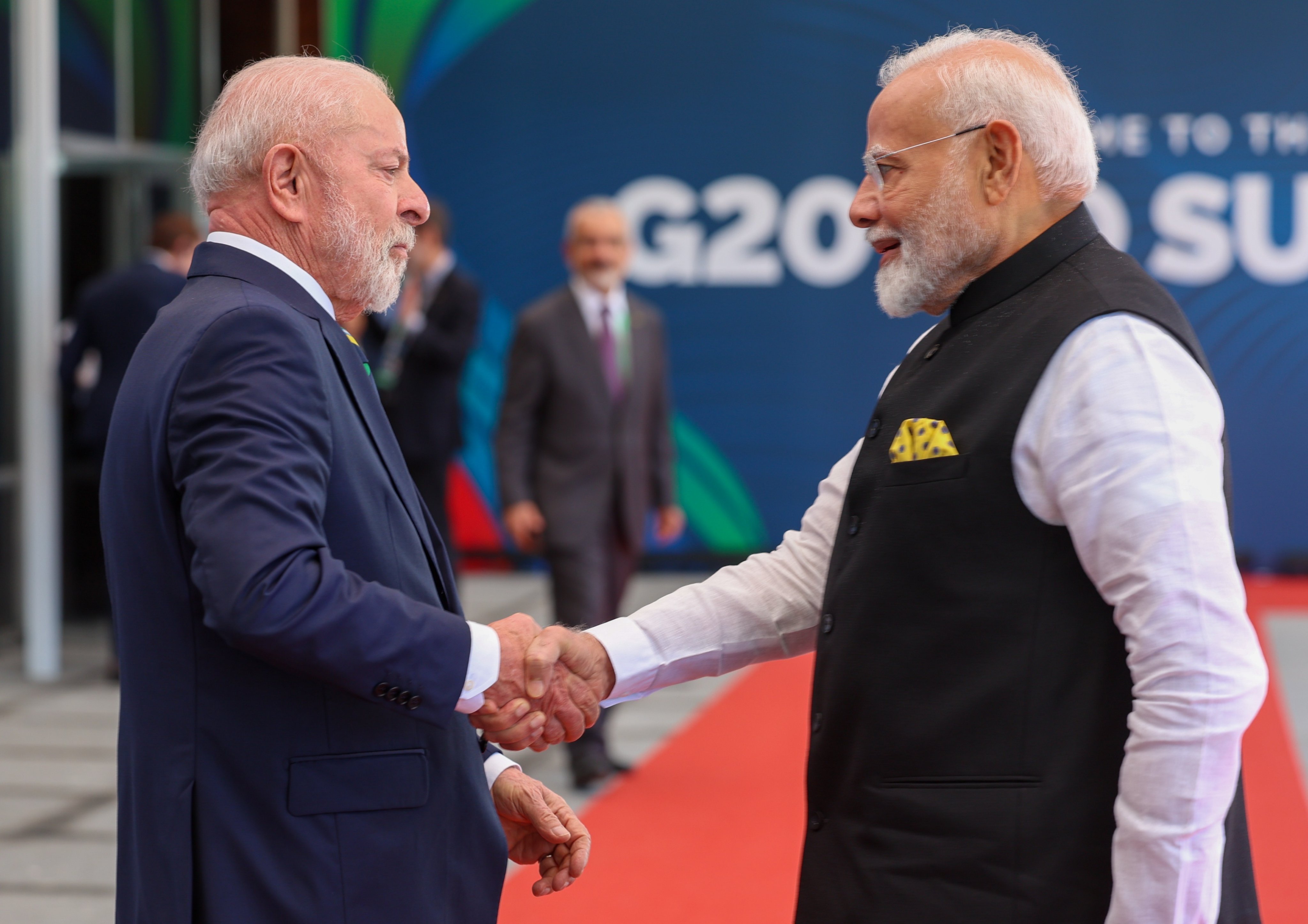India's Modi and Brazil's Lula Forge Common Front on Trade, Energy and BRICS After U.S. Tariff Offensive
In a direct response to rising economic pressure from the United States, India and Brazil today once again stated their strategic alignment through a high-level phone call between their leaders, discussing the next phase of BRICS coordination, bilateral trade expansion, and multilateral economic stability.
The conversation follows a dramatic escalation in Washington’s tariff regime, with both India and Brazil now facing steep U.S. duties and political pressure over their respective engagements with Russia.
 |
| Image Source: PM NaMo on X |
Ahead of that, Brazil’s vice president will lead a senior delegation to India in October for a Trade Monitoring Mechanism dialogue, expected to focus on defense, energy, digital infrastructure, critical minerals, and health cooperation.
The exchange comes just one day after the United States formally imposed a second wave of tariffs on Indian goods, raising total duties to 50%, citing India’s continued import of Russian crude oil.
A similar 50% tariff now applies to select Brazilian exports, deepening Washington’s rift with the two largest economies in the Global South. The Indian Ministry of External Affairs has strongly condemned the move as “unjustified and unreasonable,” pointing to a broader pattern of selective enforcement by the U.S., which continues to trade with Russia in various sectors.
Brazil, too, has faced U.S. sanctions beyond trade, with the recent blacklisting of a senior judicial figure under the Global Magnitsky Act, a move interpreted in Brasília as interference in domestic governance.
Both governments now view their economic relationship as central to resisting what they describe as unilateral trade coercion from Washington.
During today’s call, both leaders emphasized their commitment to expanding the MERCOSUR–India trade agreement and increasing bilateral trade volume to over $20 billion by 2030.
They also explored technical linkages between their national digital payment systems—India’s UPI and Brazil’s PIX—as part of a broader initiative to strengthen South-South fintech ecosystems.
This coordinated positioning by India and Brazil comes amid what analysts are calling a structural fracture in post-Cold War economic alignments. President Trump’s August 6 Executive Order, which invoked national security powers to penalize Russian energy partners, has triggered strong reactions from BRICS capitals.
Russia, for its part, has withdrawn from longstanding arms-control treaties and warned of U.S. missile deployments in the Indo-Pacific, while India has held high-level strategic consultations in Moscow.
The BRICS bloc, which includes China and South Africa, has not issued a joint statement, but today’s India–Brazil call suggests increasing informal coordination in response to U.S. trade aggression.
Analysts note that Washington’s attempts to isolate Russia may be inadvertently accelerating the evolution of a multipolar global trade structure faster than it otherwise could.
